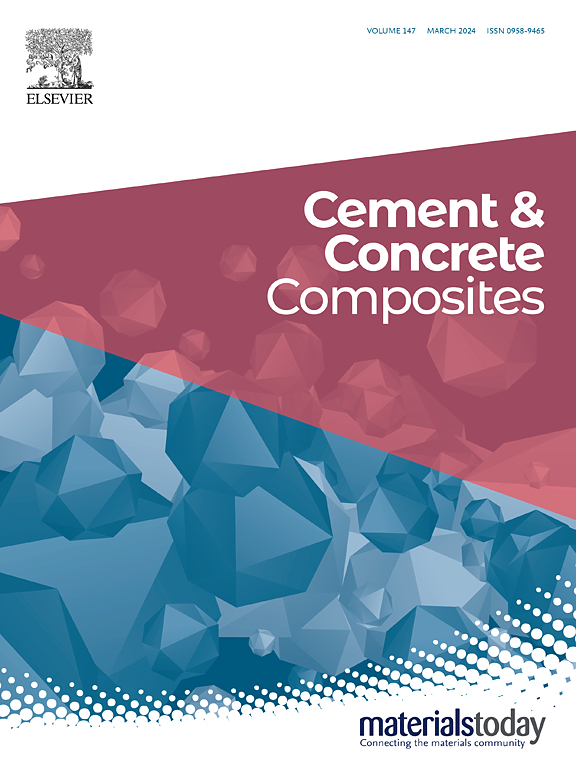Quantitative analysis of pore structures and microcracks in self-healing concrete after freeze-thaw exposure: An X-ray computed tomography-based approach
IF 10.8
1区 工程技术
Q1 CONSTRUCTION & BUILDING TECHNOLOGY
引用次数: 0
Abstract
X-ray computed tomography (CT) is a valuable tool for investigating the microstructure of concrete. This study introduces a method for analyzing the pore structures and microcracks of self-healing concrete after 300 rapid freeze/thaw (F/T) cycles using CT images with a relatively low resolution of 18.08 μm. Urea-formaldehyde microcapsules alone and in combination with polyvinyl alcohol microfibers were able to reduce 39.1 % and 65.5 % of the microcracks, respectively. Our approach involves calculating the total porosity and identifying constituents within the damaged pore structure based on geometric characteristics, employing the concepts of both circularity and roundness to discriminate intact pores, microcracks, and small/large-size pores with microcracks. The method's reliability is validated by comparing the total porosity results with the mercury intrusion porosimetry data. Our approach provides an effective tool for quantitative evaluation of the microstructure of self-healing concrete after freeze-thaw exposure, paving the way for more efficient and cost-effective analyses of concrete durability.
冻融暴露后自愈混凝土孔隙结构和微裂缝的定量分析:基于x射线计算机层析成像的方法
x射线计算机断层扫描(CT)是研究混凝土微观结构的重要工具。本文介绍了一种利用分辨率相对较低的18.08 μm CT图像分析300次冻融循环后自愈混凝土的孔隙结构和微裂缝的方法。脲醛微胶囊单独使用和与聚乙烯醇微纤维联合使用分别能减少39.1%和65.5%的微裂缝。我们的方法包括计算总孔隙度,并根据几何特征识别受损孔隙结构中的成分,采用圆度和圆度的概念来区分完整孔隙、微裂缝以及带有微裂缝的小/大尺寸孔隙。通过与压汞孔隙度测量数据的对比,验证了该方法的可靠性。我们的方法为冻融条件下自愈混凝土的微观结构的定量评估提供了有效的工具,为更有效和更具成本效益的混凝土耐久性分析铺平了道路。
本文章由计算机程序翻译,如有差异,请以英文原文为准。
求助全文
约1分钟内获得全文
求助全文
来源期刊

Cement & concrete composites
工程技术-材料科学:复合
CiteScore
18.70
自引率
11.40%
发文量
459
审稿时长
65 days
期刊介绍:
Cement & concrete composites focuses on advancements in cement-concrete composite technology and the production, use, and performance of cement-based construction materials. It covers a wide range of materials, including fiber-reinforced composites, polymer composites, ferrocement, and those incorporating special aggregates or waste materials. Major themes include microstructure, material properties, testing, durability, mechanics, modeling, design, fabrication, and practical applications. The journal welcomes papers on structural behavior, field studies, repair and maintenance, serviceability, and sustainability. It aims to enhance understanding, provide a platform for unconventional materials, promote low-cost energy-saving materials, and bridge the gap between materials science, engineering, and construction. Special issues on emerging topics are also published to encourage collaboration between materials scientists, engineers, designers, and fabricators.
 求助内容:
求助内容: 应助结果提醒方式:
应助结果提醒方式:


